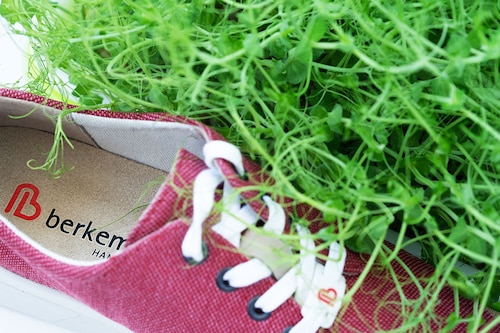From mattresses to subway seating and cables: The unusual materials making sneak
Trash and other obsolete items are now slowly but surely replacing traditional materials, allowing sneakers to start going green


What if the sneakers of the future were made from electronic cables, mattresses or vintage windbreakers? The idea might sound strange, but this alternate reality is taking shape under the aegis of designers keen to reduce waste and limit the use of new resources. Trash and other obsolete items are now slowly but surely replacing traditional materials, allowing sneakers to start going green.
The textile industry, which includes clothing and footwear, is estimated to be responsible for generating four billion tonnes of CO2 equivalent per year, according to data published by France"s Agency for Ecological Transition (ADEME). It could even be responsible for more than a quarter of global greenhouse gas emissions by 2050 if no action is taken by the main players in the sector. Clearly, the entire industry needs to mobilize to change the situation by, for example, introducing more eco-responsible materials, making manufacturing processes more ethical, or democratizing services and practices that encourage waste reduction. This includes upcycling, the art of repurposing materials and objects destined for the trash, which is steadily gaining ground in the fashion world. This is being seen in sneakers, which are being now made from totally unexpected materials, from mattresses to electronic cables to subway seats, to help reduce the mountains of waste that pollute soils and oceans around the world.
Eco-responsibility and upcycling are the core values of a new sneaker brand called La Bise à Denise, created by Jonathan Maret and Christophe Segura, two designers based in Perpignan, France. The idea is to combine art, sustainability and eco-design, without ever compromising on style and comfort. This is achieved through upcycling, with every material used in the design of the sneakers otherwise destined for destruction or abandonment. This is the case for the leather scraps that come from several tanneries and make up the bulk of the sneaker uppers, but also for fish leathers—salmon, trout, sturgeon—derived exclusively from skins destined to be discarded. The sturgeon leather used in the "Galathéa" model, again on the upper, for example, comes from companies producing French caviar, a rare and precious material that is repurposed so that it doesn"t end up in the trash.
La Bise à Denise sneakers aren"t entirely upcycled—the outsole is made of rubber and the laces of cotton—but they do boast of being made mostly from waste or materials destined for destruction. The insole, for example, is made from recycled mattresses, and more precisely, from end-of-life foam and latex, a combination that gives rise to absorbent and insulating properties. All of which testifies to the infinite possibilities of upcycling. And in this field, a handful of designers have gone even further, turning to the most unlikely of objects to make sneakers that are as original as they are eco-friendly.
The Sans les Plumes brand is focusing on the fate of Paris public transport seating textiles—from subways, trains and streetcars, for example—with the aim of transforming these technical fabrics into trendy sneakers. This gives rise to original collections of sneakers that are unlike any others, and usually only available in (very) limited editions, repurposing textiles that would otherwise be discarded when public transport is renovated. Avoiding waste is also a challenge taken up by brands like BIS* and Eugà¨ne Riconneaus. The former makes use of vintage windbreakers, while the latter repurposes marine waste—fishing nets, seafood, seaweed—to create all kinds of sneaker models.
But it"s undoubtedly the young British-Nigerian designer, Tega Akinola, who has stood out the most, with sneakers—and a few pairs of pumps—made from electronic cables, old fleeces and used socks. It"s a feat that has catapulted this previously unknown creator to the status of coveted designer. Not only has she been supported by the APOC Store marketplace, but one of her creations has also featured in the "Sneakers Unboxed: Studio to Street" exhibition at London"s Design Museum. All of which offers another artistic way of showing that upcycling is part of the solution to making the fashion industry greener.
First Published: May 31, 2023, 14:49
Subscribe Now